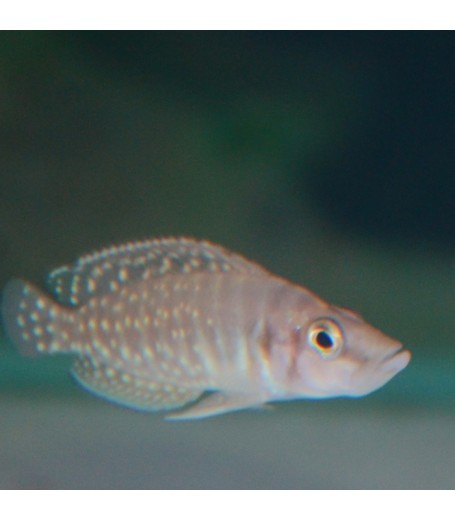LAMP CALVUS
- RM0.00
The Calvus Cichlid is endemic to the south-western part of Lake Tanganyika, where it is found in the shallow, precipitous rocky habitat. Here, these laterally compressed fish glide effortlessly between cracks and crevices in their ongoing search for shrimps, other small crustaceans, and fish fry. The aquarium that houses this species should be at least 5ft long, with a good amount of filtration, water movement and oxygenation. The best choice of substrate would be coral sand or aragonite, which will help to keep the water hard and alkaline. Rocks should be used to create small outcrops and plenty of caves, ensuring that there are ample visual barriers. Despite their slightly menacing appearance, Calvus Cichlids are usually only mildly aggressive towards one another in the confines of the home aquarium, and broken lines of sight amongst the decor will help if any problems do arise. These cichlids can be maintained in a species-only aquarium or as part of a Tanganyikan community with fish of similar size and temperament. Due to the capacious mouth and predatory nature, they are not to be housed with small fish, such as shelldwellers. If a breeding pair forms within the group, they can become much more territorially aggressive than usual, and it is often best to move them to a tank of their own at this stage. Calvus Cichlids are intolerant of poor water conditions, so ensure small partial water changes are carried out on a frequent basis. Several geographic colour variations are available, including 'Black', 'Chaitika', 'Chisanse', 'Kabemba', and 'Yellow'.
Feeding
Meaty frozen foods such as vitamin-enriched brineshrimp, Mysis shrimp, chopped krill, mosquito larvae etc. Flake and slow-sinking pellets/granules can also be given, but most prefer frozen meaty fare.
Breeding
Substrate spawner which has been bred in the home aquarium. The act of spawning is usually a fairly secretive affair and often passes unnoticed by the aquarist. The female fish (who will be smaller) will select a cave, flowerpot, or large shell with an entrance through which only she can fit. She will then deposit eggs onto the substrate inside the cave, whilst the male releases his milt at the entrance. Both fish will then fan the water with their pectoral fins, in order to direct the milt over the eggs, which may number as many as 200. The female fish guards the eggs inside the cave, whilst the male guards the general perimeter around it. The eggs should hatch within 48 hours (temperature dependent) and will become free-swimming some 7-10 days later. At this point, the young can be offered baby brineshrimp (Artemia nauplii). It may be prudent to move the male to other quarters before the fry become free-swimming, as he may predate on them. Observe the fry closely and separate them by size as they mature, as it is not unheard of for larger fry to prey on smaller fry.
| Synonyms | Lamprologus calvus, Neolamprologus calvus |
| Distribution | Lake Tanganyika, Africa. |
| Sexual Dimorphism | Male fish grow larger, are taller-bodied, and develop extended finnage. |
| Maximum Size | 13.5cm (5.3") |
| Temperature | 23-25 deg C (73-77 deg F) |
| Water Parameters | Hard, alkaline conditions essential. pH: 8.0-9.0, dH: 15-25 degrees. |
| Compatibility | Tanganyikan cichlid tank only. |
| Lighting | No special requirements |
Reviews
There are no reviews for this product.



